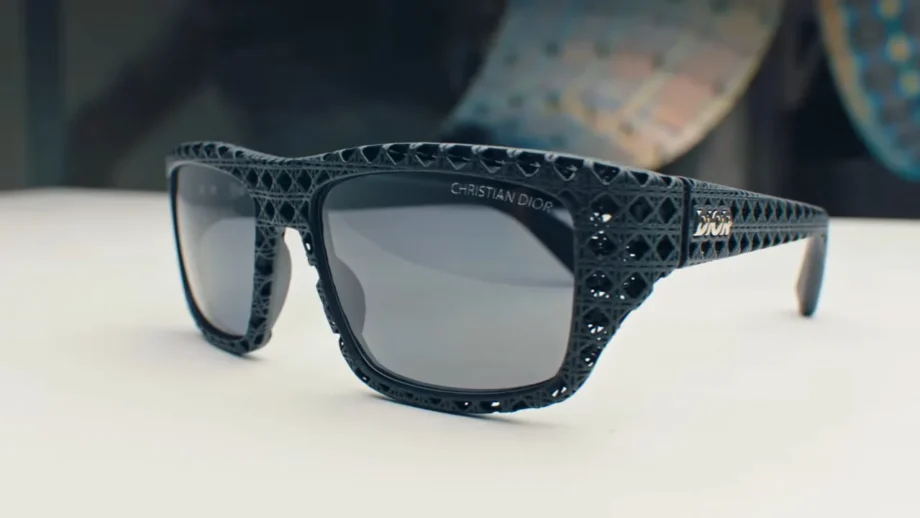The eyewear industry is on the cusp of a revolutionary transformation, and leading the charge is LVMH with its innovative use of 3D printing technology. This article delves into how LVMH is leveraging additive manufacturing to redefine luxury eyewear, offering a peek into the future of fashion and technology.
What is 3D Printing?
3D printing, also known as additive manufacturing, is a process where materials are joined or solidified under computer control to create a three-dimensional object. This technology has been making waves across various industries, and now it’s taking the eyewear industry by storm.
How Does 3D Printing Work?
In essence, 3D printing works by layering materials, such as plastic or metal, to form a final product. This process allows for incredible precision and customization, which is why it’s becoming so popular in creating unique and high-quality eyewear.

LVMH and 3D Printing: A Perfect Match
Why LVMH is Investing in 3D Printing
LVMH, the luxury goods conglomerate, is always at the forefront of innovation. By adopting 3D printing, they aim to enhance their eyewear portfolio with cutting-edge designs and unparalleled quality.
Customization and Personalization
One of the biggest advantages of 3D printing is the ability to offer customized and personalized products. LVMH can now cater to individual preferences, ensuring each pair of eyewear is a perfect fit for the customer.
Sustainability in Manufacturing
3D printing significantly reduces waste compared to traditional manufacturing methods. This aligns with LVMH’s commitment to sustainability and reducing their environmental footprint.

The Process of 3D Printing Eyewear at LVMH
Design and Prototyping
The journey begins with design and prototyping. Designers at LVMH create digital models of eyewear, which are then refined through several iterations to ensure the perfect look and feel.
Material Selection
Choosing the right material is crucial. LVMH uses high-quality, durable materials that are also lightweight, ensuring comfort and longevity for their eyewear.
Printing and Assembly
Once the design is finalized and the material selected, the 3D printing process begins. This stage involves printing the components of the eyewear, which are then meticulously assembled and finished by skilled craftsmen.
Benefits of 3D Printed Eyewear
Enhanced Design Flexibility
3D printing allows for intricate and complex designs that would be impossible to achieve with traditional manufacturing methods. This means more innovative and stylish eyewear for consumers.
Speed and Efficiency
The production process is significantly faster with 3D printing. LVMH can quickly bring new designs to market, staying ahead of trends and meeting consumer demand more efficiently.
Cost-Effective Production
While the initial investment in 3D printing technology can be high, the long-term savings are substantial. Reduced waste and faster production times translate to cost savings for LVMH, which can potentially be passed on to consumers.
Challenges and Solutions
High Initial Costs
The technology and equipment required for 3D printing are expensive. However, LVMH’s scale and resources allow them to invest in this technology, reaping the benefits in the long run.
Quality Control
Ensuring consistent quality can be challenging. LVMH addresses this by combining cutting-edge technology with traditional craftsmanship, ensuring each piece meets their high standards.

Case Studies: LVMH’s 3D Printed Eyewear
Tag Heuer
Tag Heuer, a brand under LVMH, has been a pioneer in integrating 3D printing into their eyewear line. Their innovative designs are a testament to the potential of this technology.
Hublot
Hublot’s limited-edition 3D printed sunglasses have garnered attention for their unique design and superior quality, setting a new standard in the luxury eyewear market.

The Future of 3D Printed Eyewear
Continued Innovation
LVMH is committed to continuous innovation. As 3D printing technology advances, we can expect even more exciting developments in their eyewear offerings.
Broader Adoption Across Brands
The success of 3D printing in LVMH’s eyewear brands will likely inspire broader adoption across their other luxury products, potentially revolutionizing the entire industry.
Conclusion
The integration of 3D printing technology into LVMH’s eyewear line marks a significant milestone in the evolution of luxury fashion. By embracing this innovative approach, LVMH not only enhances its product offerings but also sets a new standard for the industry. The future of eyewear is here, and it’s being shaped layer by layer, one 3D print at a time.
FAQs
- What makes 3D printed eyewear better than traditionally manufactured eyewear? 3D printed eyewear offers unparalleled customization, design flexibility, and a more sustainable production process compared to traditional methods.
- Are 3D printed eyewear products more expensive? Initially, they might be, due to the high cost of 3D printing technology. However, the efficiency and reduced waste can lead to cost savings in the long term.
- How durable is 3D printed eyewear? When made with high-quality materials, 3D printed eyewear can be just as durable, if not more so, than traditional eyewear.
- Can 3D printed eyewear be customized for individual fit? Yes, one of the biggest advantages of 3D printing is the ability to create customized eyewear tailored to individual preferences and measurements.
- What are the environmental benefits of 3D printing eyewear? 3D printing generates less waste compared to traditional manufacturing methods, making it a more sustainable option for producing eyewear.




